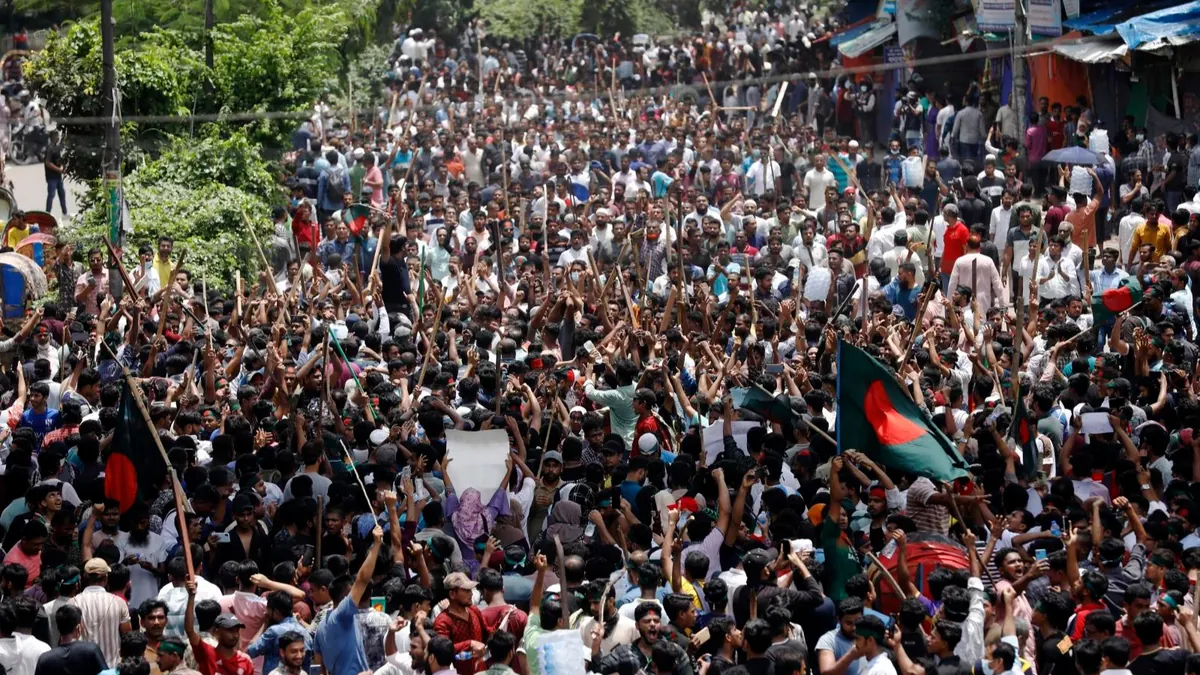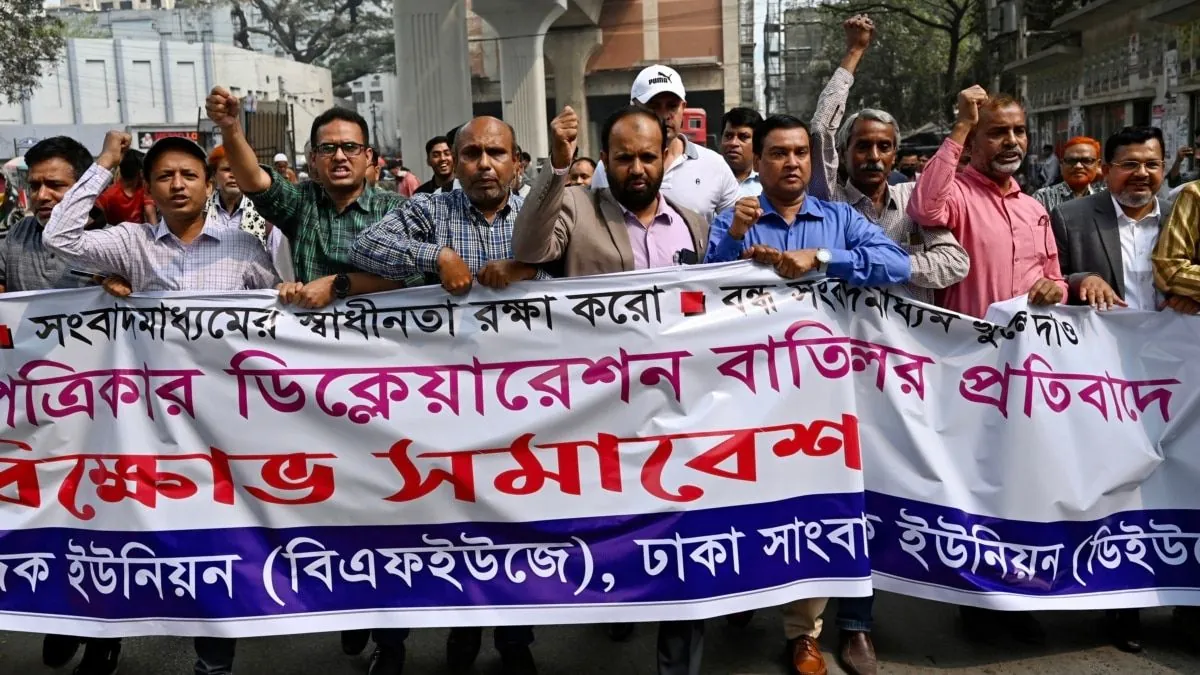Bangladesh Media at Crossroads: Journalists Navigate Trust Crisis Amid Protests
Bangladeshi journalists face physical dangers and credibility challenges while covering anti-government protests. The movement, sparked by a controversial job quota system, led to PM Sheikh Hasina's resignation and could reshape media landscape.

In the wake of Bangladesh's recent political upheaval, the nation's media finds itself at a critical juncture. Journalists have been thrust into the spotlight, navigating a complex landscape of physical dangers and public mistrust while covering the anti-government protests that led to Prime Minister Sheikh Hasina's resignation on August 5, 2024.
The protests, which began in July 2023, were initially sparked by opposition to a civil service job quota system perceived as corrupt and nepotistic. However, they quickly evolved into a broader uprising against the government. Fatima Tuj Johora, a 29-year-old independent photojournalist, found herself on the front lines, facing tear gas and rubber bullets while grappling with a more insidious threat: eroding public trust in the media.
"Many think the media is part of the government. We had to continuously convince the police and protesters that we were there to tell the truth. Working in that scenario was more difficult than covering the protest itself."
The roots of this trust deficit can be traced back to Bangladesh's complex media landscape. Despite robust growth in the sector over the past two decades, with thousands of outlets across various platforms, questions of ownership transparency and political affiliations have cast doubt on editorial independence. A 2020 report by the Center for Governance Studies think tank revealed that politicians, particularly from Hasina's Awami League party, often had stakes in media ownership.

This political influence has had far-reaching consequences. Press conferences with the prime minister were dubbed "praise conferences" by some reporters, highlighting a culture of flattery rather than critical questioning. The government's heavy-handed approach to media control, including the closure of opposition-supporting newspapers and the arrest of prominent journalists, further eroded public trust.
The situation came to a head on July 14, 2024, when Hasina's flippant response to questions about the job quota protests during a press conference ignited widespread anger. The ensuing protests turned deadly, with reports indicating that at least 440 people were killed in clashes between July 16 and August 5, 2024.
Amidst the chaos, some journalists emerged as heroes in the eyes of protesters. Sazid Hossain, a photographer for Prothom Alo, captured a defining image of the movement on July 15, showing armed men allegedly affiliated with the Awami League's student wing threatening protesters. His bravery came at a personal cost, as he was later attacked by government supporters.
The challenges faced by journalists during this period were numerous and severe. Many reported being targeted by both police and protesters, with at least five journalists killed and about 200 injured while covering the unrest. The government also imposed restrictions on protest coverage, including directives not to broadcast the students' demands.
Despite these obstacles, many Bangladeshi journalists persevered in their efforts to provide accurate and timely information to the public. Their dedication has not gone unnoticed, with some being cheered by crowds for their integrity and fearless reporting.
As Bangladesh looks to the future, the media sector faces a crucial opportunity for reflection and reform. The protest movement has highlighted the need for greater transparency, editorial independence, and a renewed commitment to journalistic ethics. By addressing these issues, Bangladesh's media can work towards rebuilding public trust and fulfilling its vital role in the nation's democracy.
In the words of Saydia Gulrukh, a journalist at the New Age daily, "The first step forward is to recognize the rise of sycophancy—the sycophantic turn in the media industry." As Bangladesh enters a new political era, its media stands at a crossroads, with the potential to emerge stronger and more credible than ever before.


































